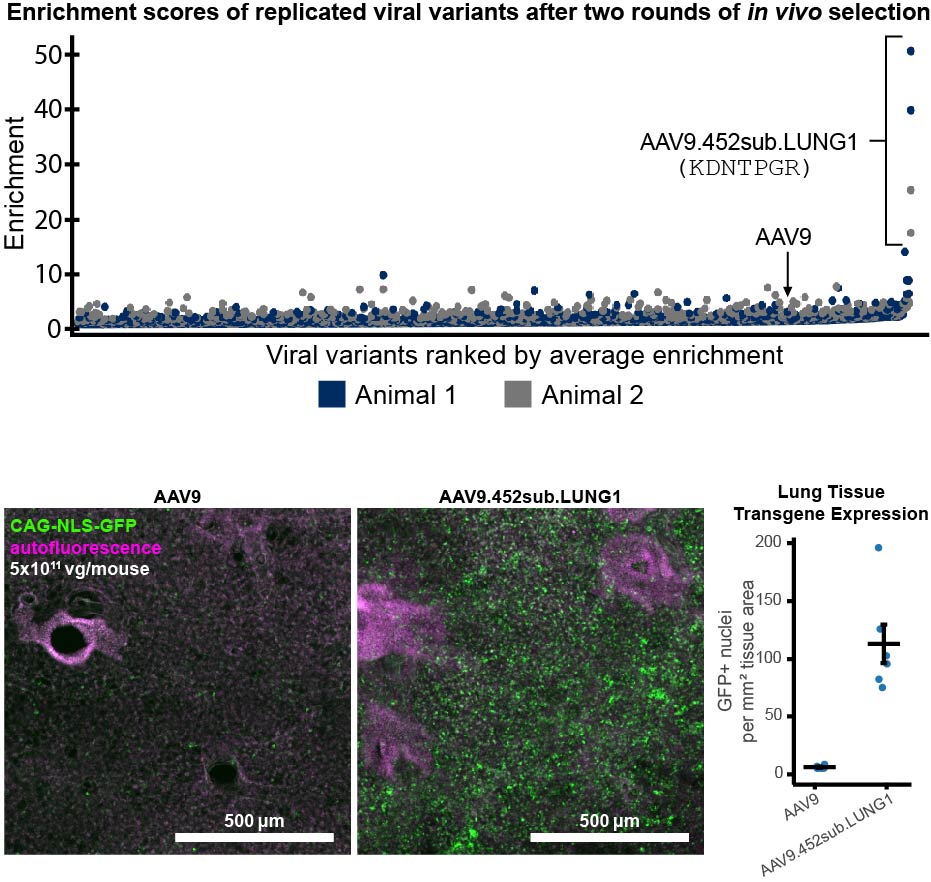
Can directed evolution of the #AAV capsid yield useful lung gene therapy vectors? My paper with @VivianGradinaru at @Caltech, out today in @MolTherapy – Methods and Clinical Development (cell.com/molecular-ther…), aims to answer this question. 1/8
Compared to the brain, liver, muscle, eye, or inner ear, developing specialized AAV variants for the lung has received much less focus. This is despite the prevalence of lung-specific genetic disorders (i.e. Idiopathic Pulmonary Fibrosis). 2/8
Our lab specializes in developing gene therapy vectors for the brain, but the disparity in gene therapy tools for lung compared to other organs inspired us to see if the methods we use in the brain could be applied to this problem. 3/8
Most AAV engineering focuses on inserting amino acids between AA588-589 of the capsid. Since AA452-458 of the AAV9 capsid are further protruding, we tested substitution libraries at this site, hoping to alter tropism towards lung and validate this site for AAV engineering. 4/8 

From two rounds of in vivo selections, a single variant emerged! Quantification revealed that the new variant (AAV9.452sub.LUNG1) transduces mouse lung 18-fold higher than AAV9. 5/8 

We wanted to determine if disease relevant cell types were getting targeted. Immunofluorescence analysis revealed that ATII cells (a cell population with roles in several lung diseases, including IPF) displayed transgene expression in ~30-fold more cells than AAV9. 6/8 

AAV9.452sub.LUNG1 expands the toolbox for gene delivery to the lung and demonstrates that productive vectors can be made through substitution between AA452-458 of the AAV9 capsid. We have shared the plasmid for AAV9.452sub.LUNG1 on @Addgene: addgene.org/184592/. 7/8
I am grateful for the support and mentorship of my advisor @VivianGradinaru and co-authors Nick Goeden and Nick Flytzanis (who both founded @CapsidaBio). I couldn't have done this project without them. 8/8
• • •
Missing some Tweet in this thread? You can try to
force a refresh



